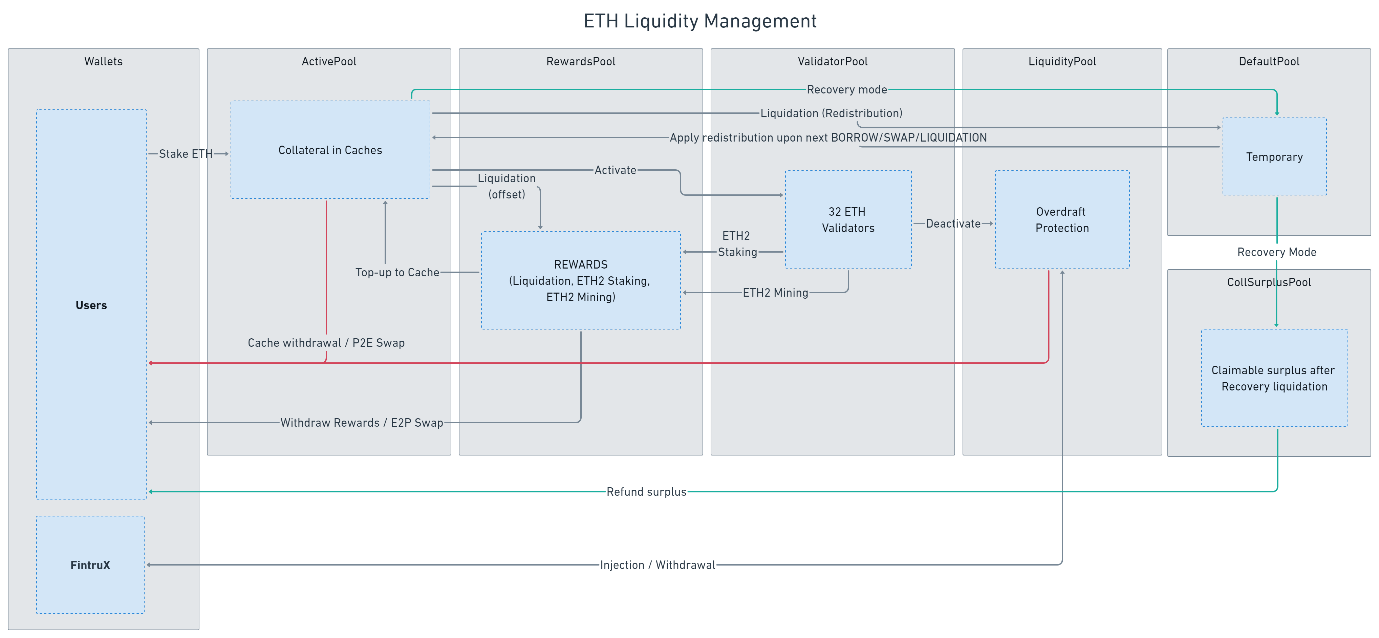ETH Liquidity Management
Since ETH staked in validators are locked until ETH2.0 launches, at the moment ETH can be withdrawn from the platform only as our system liquidity allows. Our platform is fully transparent and decentralized. System ETH liquidity is communicated on a live basis via platform statistics. Withdrawals are paid out first come first serve.
Once ETH 2.0 launches, there should not be any withdrawal restrictions.

Intake Of ETH (Cache)
Step 1:
ETH that is staked in staked.finance resides in ActivePool contract.
Step 2:
Once sufficient ETH is pooled together, validators are activated (at least 32 ETH).
Step 3:
ETH is transferred to the ValidatorPool contract to earn ETH2 Staking and ETH2 Mining Rewards.
ETH Rewards (Rewards)
Step 1:
ETH2 rewards are transferred from ValidatorPool contract to RewardsPool contract.
Step 2:
Users can request a withdrawal of their rewards from RewardsPool contract to Wallet or Cache. If there is not enough system ETH liquidity, users can choose to perform an ETH to PAYD swap and receive PAYD into their wallet instead. This will not change your individual reserve ratio.
Unstaking ETH (Cache)
Step 1:
Users can unstake ETH from the cache by managing or closing their Cache. Since ETH staked in validators are locked until ETH2.0 launches, the ETH staked in the ValidatorPool contract currently cannot be withdrawn. Thus, the ETH will be withdrawn from the ActivePool contract.
Step 2:
If the amount of ETH requested to be unstaked by user is larger than available funds in the ActivePool contract, FintruX will supply the LiquidityPool contractwith the necessary ETH from their own wallet.
staked.finance (SF1) is in the midst of a applying for a DPT licence with the Monetary Authority of Singapore. Please note that during this period, our website may change and be refined over time.